boxing gloves sizing guide

Navigating boxing glove sizing is crucial for safety and performance. Proper fit protects your hands and enhances training effectiveness, ensuring optimal comfort and power transfer.
Why Proper Sizing Matters
Selecting the correct boxing glove size is paramount for both safety and maximizing your training benefits. Ill-fitting gloves can lead to hand, wrist, and even forearm injuries due to inadequate support and shock absorption during impact. Gloves that are too small restrict movement and can cause bruising, while overly large gloves diminish control and power.
A proper fit ensures your knuckles are adequately protected within the padding, minimizing the risk of fractures or sprains. Furthermore, correctly sized gloves enhance your technique, allowing for tighter fists and more accurate punches. Investing time in finding the right size is an investment in your long-term boxing health and progress.
Understanding Glove Weight (oz)
Boxing glove weight is measured in ounces (oz) and indicates the amount of padding within the glove, not necessarily the physical weight. Higher ounce gloves offer greater protection for both the wearer and their sparring partner. Generally, heavier gloves are used for sparring to reduce impact force, while lighter gloves are preferred for bag work and competition.
Common weights range from 6oz (youth/fitness) to 16oz (heavy sparring). Choosing the right weight depends on your body weight, skill level, and the specific training activity. Remember, a higher ounce doesn’t automatically mean a better glove; quality of padding and construction are equally important factors to consider.

Determining Your Weight and Skill Level
Your weight and experience significantly impact glove size selection. Beginners often benefit from heavier gloves for increased protection, while experienced boxers may prefer lighter options.
Weight-Based Sizing Chart
A general guideline for boxing glove sizing correlates with your body weight. Individuals weighing under 100 lbs typically start with 6-8oz gloves, ideal for youth or beginners focusing on technique. Boxers between 101-150 lbs commonly use 10-12oz gloves, a versatile range for various training purposes.
For those weighing 151-175 lbs, 14-16oz gloves are recommended, providing substantial protection during sparring and heavier bag work. Heavyweights, 176 lbs and above, generally opt for 16oz or larger gloves, prioritizing hand and wrist safety. Remember these are starting points; individual preferences and discipline influence the optimal choice. Always prioritize a secure, comfortable fit.
Beginner vs. Experienced Boxers
Beginners often benefit from slightly larger gloves, prioritizing maximum hand protection while learning fundamental techniques. The extra padding minimizes impact and reduces the risk of injury during initial training phases. Experienced boxers, with refined technique and stronger hand conditioning, may prefer a slightly smaller glove size.
This allows for greater feel and dexterity, enhancing speed and precision. However, safety remains paramount; experienced fighters still require adequate protection, especially during intense sparring sessions. Consider your training intensity and sparring frequency when selecting glove size, always prioritizing a secure and comfortable fit.

Boxing Glove Sizing for Different Disciplines
Glove selection varies by discipline; bag work often uses heavier gloves, while sparring demands more padding for safety, and competition requires specific weights.
Bag Gloves Sizing
Bag gloves prioritize hand and wrist support during intense heavy bag training. Typically, heavier weights are recommended for bag work, ranging from 12oz to 16oz, depending on your body weight. Individuals weighing up to 135 lbs often find 12oz sufficient, while those between 135-154 lbs may prefer 14oz. For boxers weighing 160-190 lbs, 16oz gloves are generally advised.
These gloves often feature a more streamlined design and less padding compared to sparring gloves, focusing on impact absorption and durability. Selecting the correct weight protects your hands and allows for proper technique development. Remember to consider hand circumference alongside weight for the best fit, ensuring comfortable and effective training sessions.
Sparring Gloves Sizing
Sparring gloves emphasize safety and protection for both yourself and your training partner. Due to the need for increased padding, sparring gloves are generally heavier than bag gloves. A common recommendation is 16oz for most adults, regardless of weight, to minimize impact. However, lighter individuals (under 150lbs) might consider 14oz, while heavier boxers (over 175lbs) may opt for 18oz or even 20oz.
Prioritize ample cushioning to absorb impact and reduce the risk of injury. A snug, secure fit is also crucial for control and preventing hand injuries. Always check with your gym or coach for specific sparring glove requirements, as rules can vary.
Competition Gloves Sizing
Competition boxing gloves are highly regulated, with weight determined by the boxing organization and weight class. Typically, professional boxers use 8oz or 10oz gloves, prioritizing minimal padding for maximum feel and impact. These gloves are designed for delivering and receiving punches with less cushioning, demanding exceptional hand conditioning and technique.
Amateur competitions may utilize 10oz or 12oz gloves, offering slightly more protection. It’s crucial to adhere strictly to the specified glove weight for your division to avoid disqualification. Proper fit is paramount, allowing for dexterity and preventing hand injuries during intense competition. Always verify regulations with the sanctioning body.
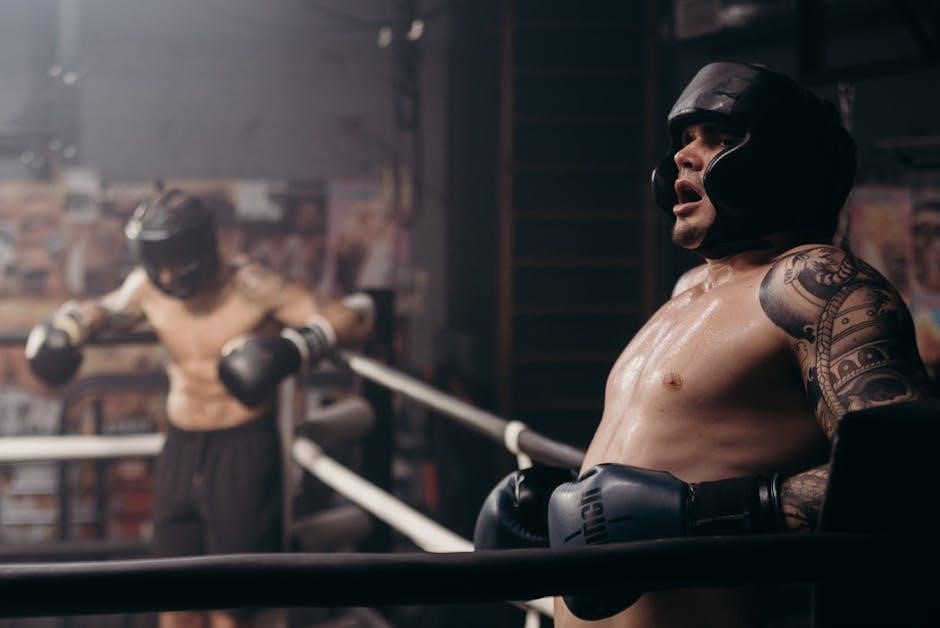
Specific Glove Size Recommendations by Weight
Weight significantly influences glove size selection; lighter individuals need smaller gloves, while heavier boxers require greater padding for adequate hand and wrist protection during training.
Under 100 lbs: Youth & Beginner Sizes
For boxers weighing under 100 pounds, particularly youth and beginners, selecting the right glove size is paramount for safety and proper technique development. Typically, a 6 to 8-ounce glove is recommended. These lighter weights allow for easier hand movement and reduced strain, crucial for those still building strength and coordination.
Youth-specific gloves often feature enhanced padding and a more streamlined fit tailored to smaller hands. Beginners should prioritize comfort and protection over heavier weights initially. A well-fitted glove will prevent injuries and foster confidence in their training. Remember to consider hand circumference alongside weight for the most accurate fit, ensuring a snug but not restrictive feel;
101-150 lbs: Common Adult Sizes
Boxers within the 101-150 pound weight range generally find 10 to 12-ounce gloves to be the most suitable. These sizes strike a balance between protection, power, and maneuverability, making them versatile for various training activities. A 10-ounce glove is often preferred for lighter sparring and bag work, while 12-ounce gloves offer increased padding for heavier hitting and more intense sessions.
It’s essential to consider individual hand size and training discipline when choosing. A snug fit is vital, allowing for proper fist formation without excessive bulk. Many brands offer gloves with adjustable wrist straps for a secure and customized feel. Prioritize quality padding to minimize the risk of hand injuries during prolonged use.
151-175 lbs: Intermediate Weight Options
For boxers weighing between 151 and 175 pounds, 14 to 16-ounce gloves are typically recommended. This weight range requires increased padding to adequately protect the hands and wrists from impact during training and sparring. A 14-ounce glove provides a good balance for general use, while 16-ounce gloves are favored for heavier sparring sessions and competition, offering superior protection.
Hand size plays a crucial role; larger hands may benefit from the extra room in a 16-ounce glove. Ensure a secure fit with adjustable wrist straps; Prioritize gloves with high-quality foam padding to absorb shock effectively and minimize the risk of injury during intense workouts.
176 lbs and Above: Heavyweight Considerations
Boxers weighing 176 pounds and above generally require 16-ounce or even 18-ounce gloves. This heavier weight class necessitates maximum hand and wrist protection due to the increased force generated in punches. Larger gloves provide crucial cushioning, reducing the risk of fractures and sprains. For sparring, 18-ounce gloves are strongly recommended to prioritize safety for both participants.
Consider hand circumference; larger hands may necessitate a wider glove model. Proper fit is paramount – gloves shouldn’t be too tight or too loose. Prioritize gloves with robust padding and secure wrist support to withstand the demands of heavyweight training and competition.
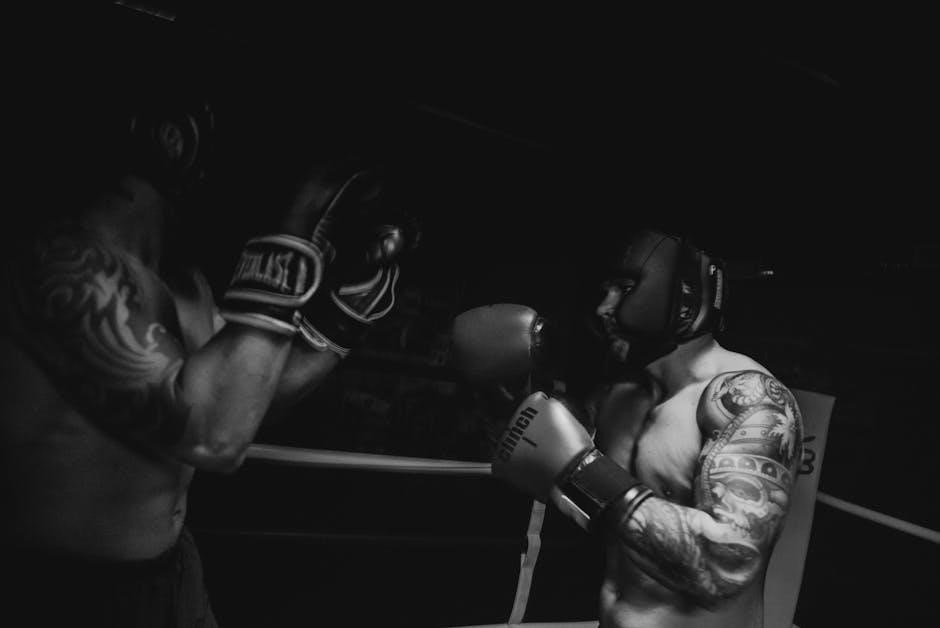
Measuring Your Hand for Accurate Fit
Accurate hand measurement is key to finding the perfect boxing glove fit. Circumference determines the appropriate glove size, ensuring comfort, protection, and optimal performance during training.
How to Measure Hand Circumference
To accurately measure your hand circumference, you’ll need a flexible measuring tape. Begin by placing the tape around the widest part of your hand, including your knuckles, but excluding your thumb. Ensure the tape is snug, but not overly tight – you want a comfortable, accurate reading.
Wrap the tape around your hand completely, ensuring it remains level and doesn’t twist. Read the measurement in inches or centimeters, depending on your preference and the sizing chart used by the glove manufacturer. It’s helpful to have someone assist you with this process to ensure accuracy. Record this measurement carefully, as it will be crucial for determining your ideal glove size. Repeat the measurement a couple of times to confirm consistency.

Converting Measurements to Glove Size
Once you have your hand circumference, converting it to the appropriate glove size requires referencing a sizing chart. These charts vary slightly between brands, so always consult the specific chart for the gloves you’re considering. Generally, a hand circumference up to 8.75 inches (22cm) corresponds to a Small (S) glove, while 9.75 inches (25cm) suggests a Medium (M).
Larger hands, measuring between 10.25 inches (26cm) and beyond, typically require a Large (L) or Extra Large (XL) glove. Remember that these are general guidelines; factors like hand shape and padding thickness can influence the ideal fit. Always prioritize comfort and ensure your hand isn’t overly constricted within the glove.

Popular Boxing Glove Brands and Their Sizing
Leading brands like Everlast, Title, and Rival offer unique sizing approaches. Understanding these nuances ensures a precise fit, maximizing protection and performance during training.
Everlast Glove Sizing
Everlast, a historically prominent brand, generally adheres to standard boxing glove weight recommendations, but individual models can vary slightly. Their sizing often correlates directly with the boxer’s weight, with options ranging from youth sizes (6-8oz) for lighter individuals to heavier weights (14-16oz) for professionals and larger athletes.
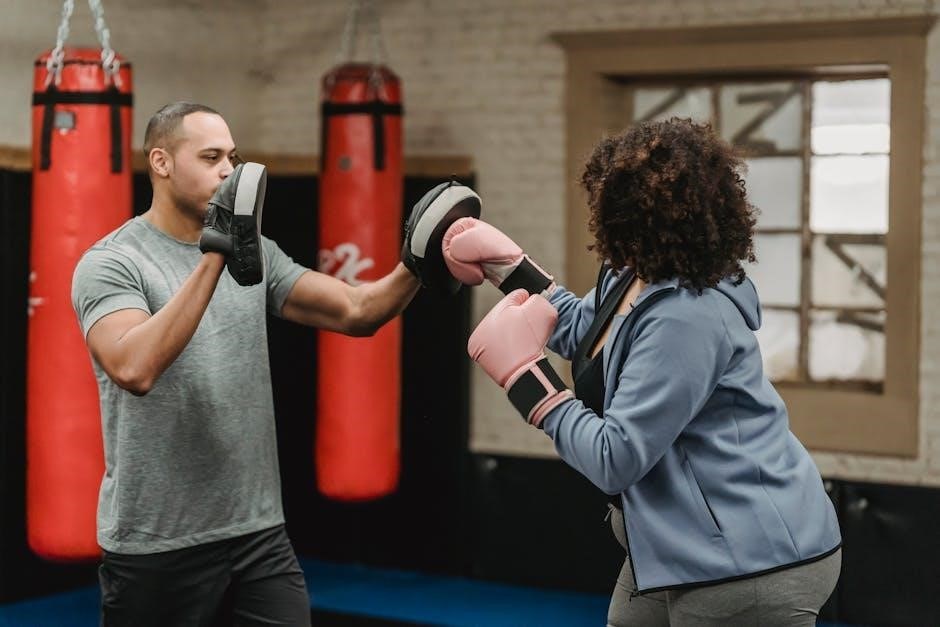
It’s important to note that Everlast gloves sometimes run a bit smaller compared to other brands. Therefore, individuals with larger hands or those preferring a more spacious fit might consider sizing up. Checking specific model reviews and considering hand circumference measurements are highly recommended when selecting Everlast gloves. Prioritizing a snug, yet comfortable, fit is essential for optimal hand protection and performance.
Title Boxing Glove Sizing
Title Boxing offers a comprehensive range of gloves, and their sizing generally aligns with industry standards based on weight and experience level. They provide detailed sizing charts, often categorizing recommendations by weight classes – from youth and beginner sizes (8-10oz) to professional weights (16-18oz).
Title Boxing gloves are known for their consistent sizing, but it’s still advisable to measure hand circumference for a precise fit. Some models feature a more contoured hand compartment, potentially requiring a slightly larger size for optimal comfort. Reviewing specific product descriptions and customer feedback can help determine the best fit for individual hand shapes and preferences. Prioritizing a secure, comfortable fit is crucial for effective training.
Rival Boxing Glove Sizing
Rival Boxing gloves are recognized for their innovative designs and focus on hand protection, often running slightly smaller than some other brands. Their sizing recommendations typically correlate with boxer weight, ranging from 8oz for smaller individuals to 16oz for heavier hitters. Rival emphasizes a snug fit to maximize power transfer and minimize hand movement within the glove.
Due to their contoured design and emphasis on a secure fit, many users suggest considering a half-size up from standard recommendations. Measuring hand circumference is particularly important with Rival gloves. Checking specific model details and customer reviews is advisable, as padding and construction can influence the perceived size. Prioritizing a comfortable, yet firm fit is key.
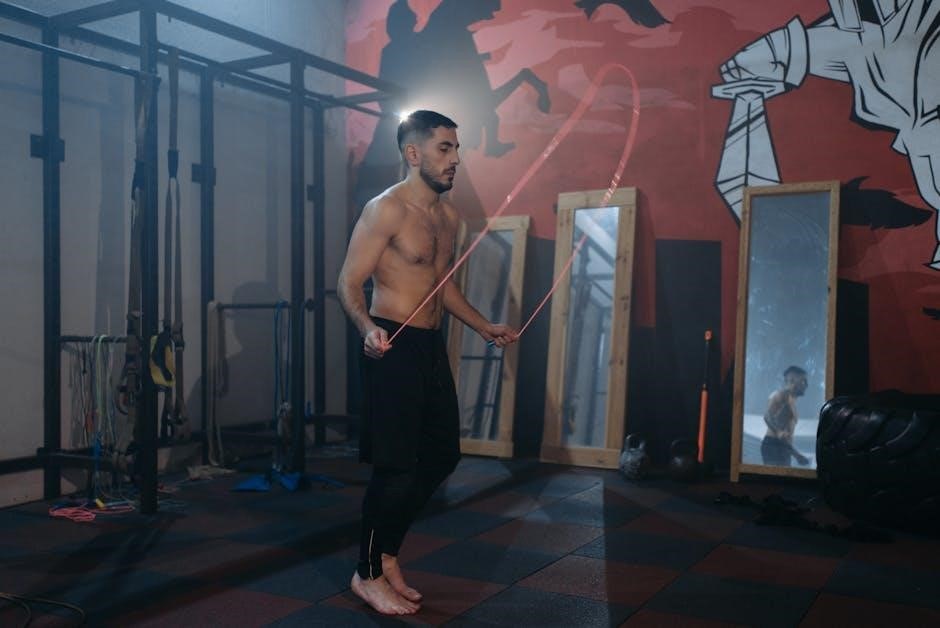
Glove Padding and Its Impact on Fit
Padding density significantly affects glove fit; more padding creates a bulkier feel, potentially requiring a larger size for comfortable hand placement and protection.
Understanding Padding Types
Boxing gloves utilize diverse padding materials, each influencing fit and protection. Traditional hair padding, while offering excellent shock absorption, compresses over time, altering the glove’s feel and potentially requiring adjustments. Modern synthetic foams, like EVA and gel, provide consistent density and durability, maintaining a more predictable fit throughout the glove’s lifespan.
Layered padding systems combine different foam densities to optimize impact distribution and comfort. Gloves with thicker padding generally feel larger, even if the internal dimensions are similar. Considering the padding type is vital when selecting a size, as a glove with denser padding might necessitate a half-size or full-size increase to accommodate your hand comfortably.
How Padding Affects Size Perception
Padding significantly impacts how a boxing glove feels, influencing size perception. Thicker padding creates a bulkier sensation, potentially leading you to believe a glove is too small when it’s actually the correct size. Conversely, minimal padding can make a glove feel smaller and less secure, even if it technically fits your hand measurements.
Different padding densities also play a role. Softer foams compress more readily, creating a snugger fit initially, but may loosen with use. Denser foams maintain their shape, offering consistent protection but potentially requiring a slightly larger glove size for comfortable hand placement. Always prioritize a secure, yet not constricting, fit, accounting for the padding’s characteristics.
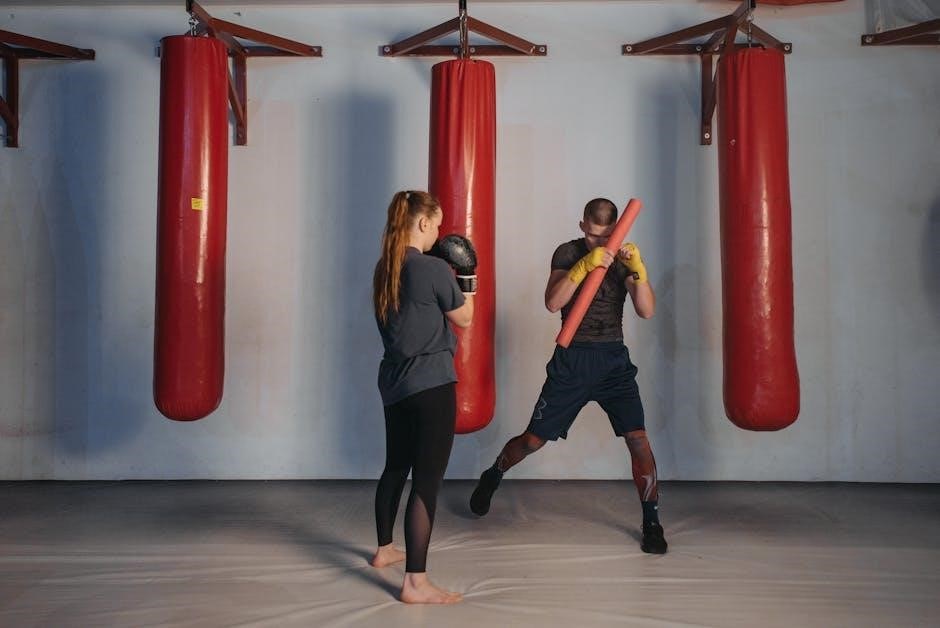
Where to Buy Boxing Gloves and Get Fitted
Explore online retailers and local boxing stores for diverse options. Professional fittings ensure optimal size and comfort, maximizing protection during training and competition.
Online Retailers
Numerous online retailers offer a vast selection of boxing gloves, providing convenience and competitive pricing. Websites like Amazon, Title Boxing, and Rival Boxing are popular choices, showcasing diverse brands and models. However, the absence of a physical fitting necessitates careful attention to sizing charts and customer reviews.
Prioritize retailers with detailed size guides, including hand circumference measurements and weight recommendations. Reading customer feedback regarding sizing accuracy is invaluable, as glove fits can vary between brands. Consider return policies before purchasing, ensuring a hassle-free exchange if the initial size proves unsuitable. Virtual try-on tools, if available, can offer a preliminary assessment of fit, though they aren’t a substitute for professional guidance.
Local Boxing Equipment Stores
Visiting a local boxing equipment store offers a significant advantage: personalized fitting assistance. Knowledgeable staff can accurately measure your hand circumference and recommend appropriate glove sizes based on your weight, skill level, and discipline. This hands-on approach minimizes the risk of purchasing ill-fitting gloves, ensuring optimal comfort and protection.
Furthermore, you can physically try on different gloves from various brands, assessing their feel, padding, and overall fit. Experienced trainers often frequent these stores, providing valuable insights and recommendations. While potentially more expensive than online options, the investment in a proper fit is worthwhile, preventing injuries and maximizing training effectiveness. Don’t hesitate to ask questions and seek expert advice.

